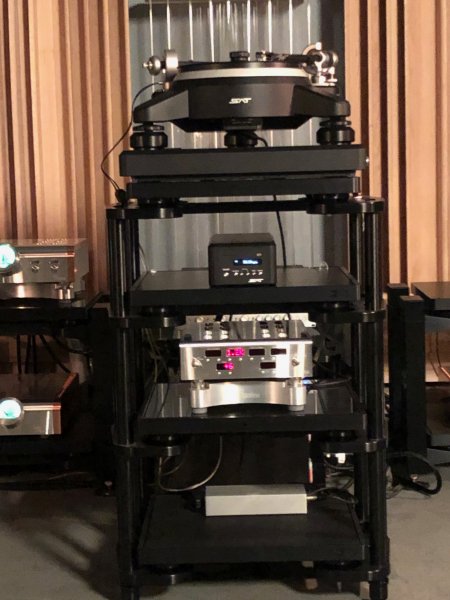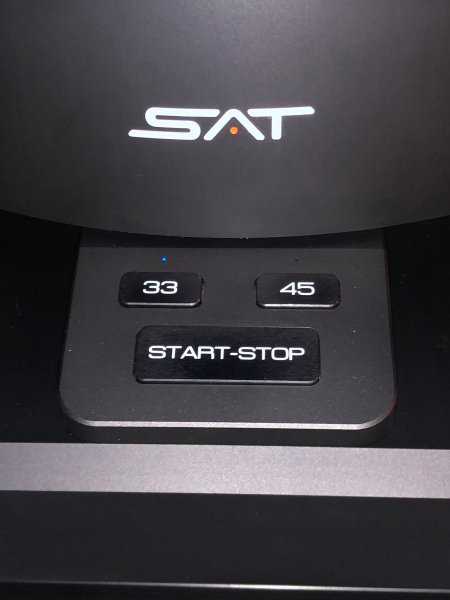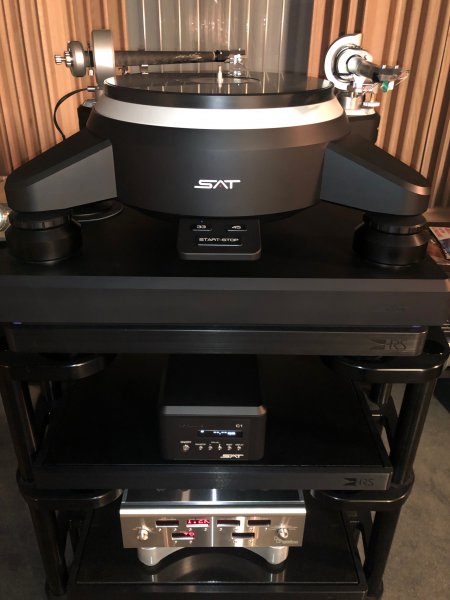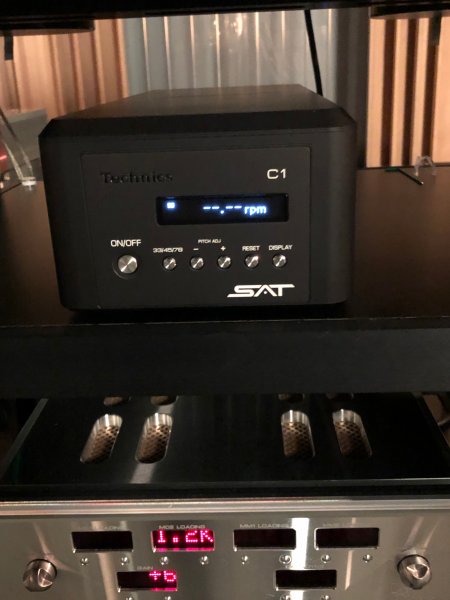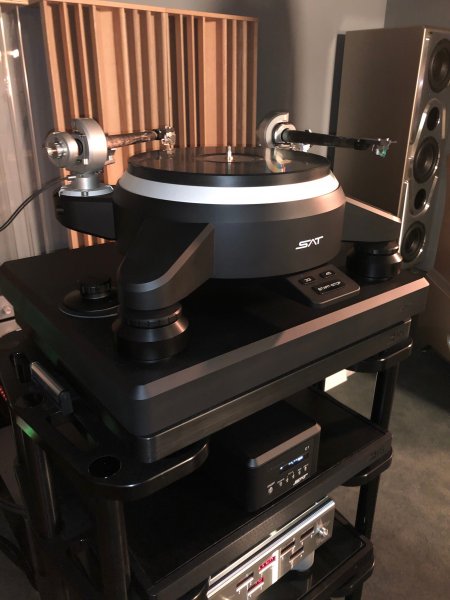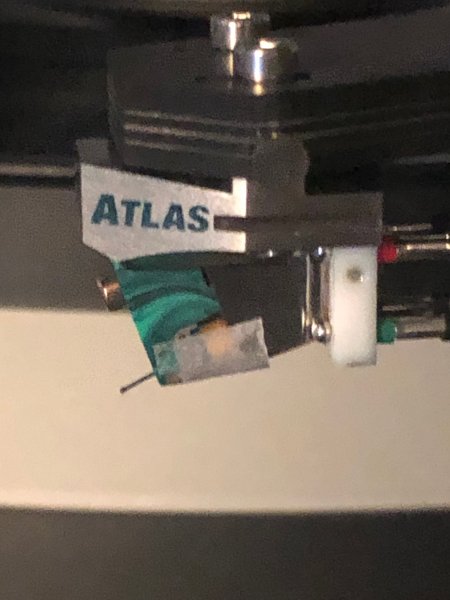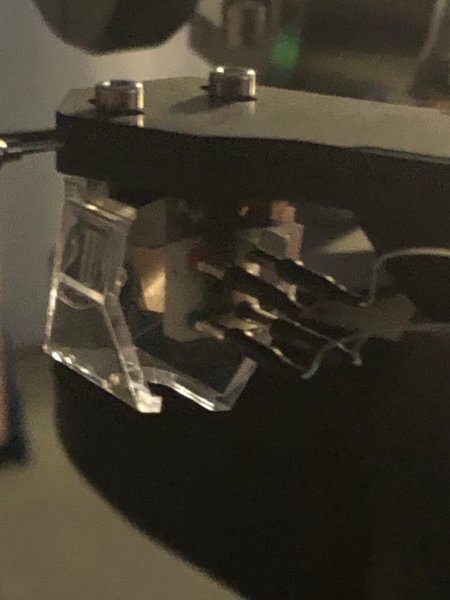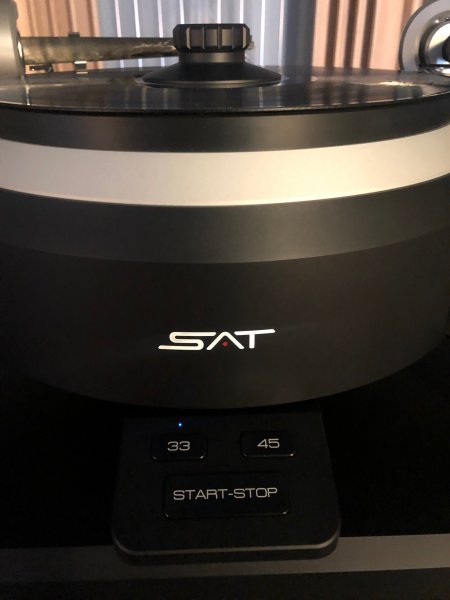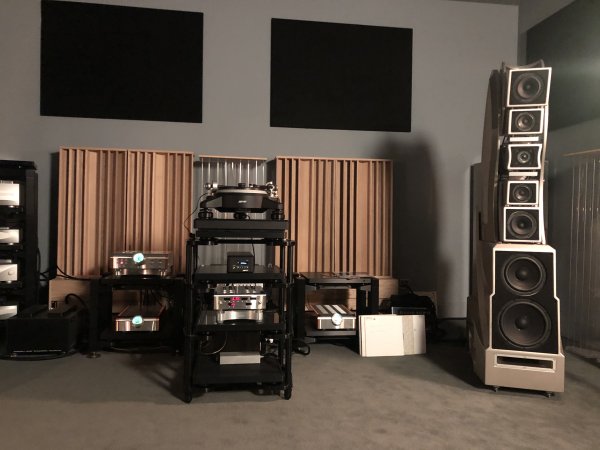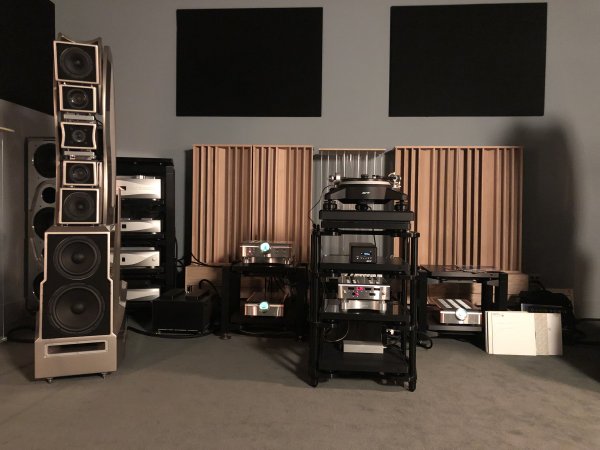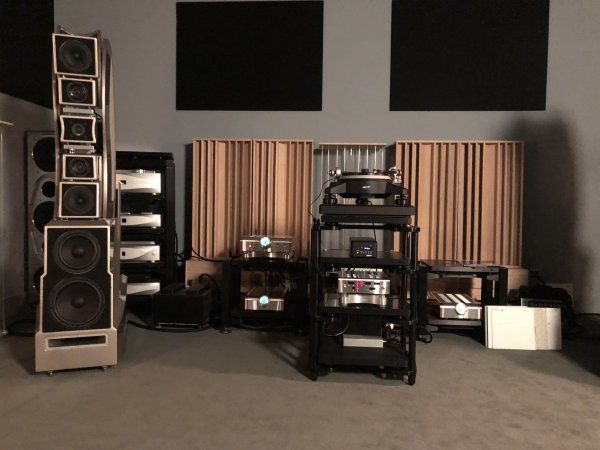Yesterday, during the demo, a friend of mine who used to have his Brinkmann Balance with Triplanar tonearm on a Herzan active isolation platform replaced that set-up with an Air Force One Premium and SAT tonearm. Both analog front-ends were on a top-of-the-line HRS rack.
He explained to us yesterday that the Herzan was frequently adjusting and had difficultly achieving a “lock” when the turntable was playing.
Conversely, MikeL and others are very happy with the NVS Wave Kinetics turntable on the Herzan platform, and the operation and functionality of the Herzan in that context.
My current personal view is that I would
not place a suspension-less turntable on an active isolation platform. (I will be placing the Aesthetix Io control unit (a phono stage festooned with tubes) on the Taiko Tana/Herzan active isolation platform.)
PS: In connection with our long thread discussion two years ago about active isolation versus passive isolation, I posted the discussion I had then with the President of Herzan.
See Post #47 of
https://www.whatsbestforum.com/thre...forms-for-turntables.22658/page-3#post-440069
Note that 4) and 5) below support Marc Gomez’s design decision of combining the low frequency isolation of the Minus K platform with the higher frequency isolation of his footer pods.
I posted on March 6, 2017:
I talked at length today with Ann Scanlan, the Technical Director, President and Founder of Herzan LLC.
I hope I am correctly reporting Ann's advice and conclusions:
1) In general, stacking isolation systems is good: passive plus passive or active plus passive.
2) I explained the motion and vibration occurring on a turntable: the motor spinning, the platter spinning, the arm moving, the cartridge undulating in the vinyl groove. I explained twice the concern about the spring suspension of a suspended turntable "fighting" with the correction mechanism of an active isolation platform. I elaborated what we are concerned about -- that the turntable suspension is set in motion, the Herzan corrects that perceived motion, and then the turntable suspension is perturbed by the Herzan's correction.
Ann said A) the response time of the Herzan is very fast and, likely, a lot faster than the response time of a spring turntable suspension, and B) she does not see the feedback loop concern at all. She says the Herzan will absorb some vibration generated on the top of the Herzan by the turntable, but will not get into some sort of feedback loop from the movement of the suspension of the turntable.
3) Ann said that in almost all cases Herzan continues to advocate connecting the active isolation platform to the floor as rigidly as possible. I asked about the Herzan option to have a layer of visco-elastic material below the top shelf of a rack. Ann said that the damping layer -- usually Sorbothane -- might go underneath a shelf but would not go underneath a top plate. If for some reason a customer wants a visco-elastic layer underneath the top plate (I.e., underneath the active isolation platform) Herzan will oblige, but with only a very thin layer of visco-elastic material, Ann said.
Other than simply stacking an independent passive isolation system on top of an independent active isolation system, there is no sense in which Herzan is developing new products which integrate different vibration isolation techniques.
4) Ann said that, in general, combining isolation techniques will result in improved isolation (not necessarily twice as good, but better than either isolation system alone).
5) Ann said it makes sense to stack some passive isolation technique targeting vibrations greater than 1,000 Hz on top of an active isolation platform handling vibrations below 1,000 Hz.
6) I asked Ann if the still or vibration-generating nature of a component being isolated drives the answer as to the most appropriate form of isolation -- active or passive. I suggested that perhaps active isolation might be the best vibration solution for a still microscope, but that passive isolation might be the best solution for something like a motor.
Ann said she does not think of it like this, that the still or vibration-generating nature of the component being isolated does not necessarily drive the best isolation solution.
7) Ann said that filling up hollow rack legs with sand is beneficial to the overall vibration-reducing effort.






